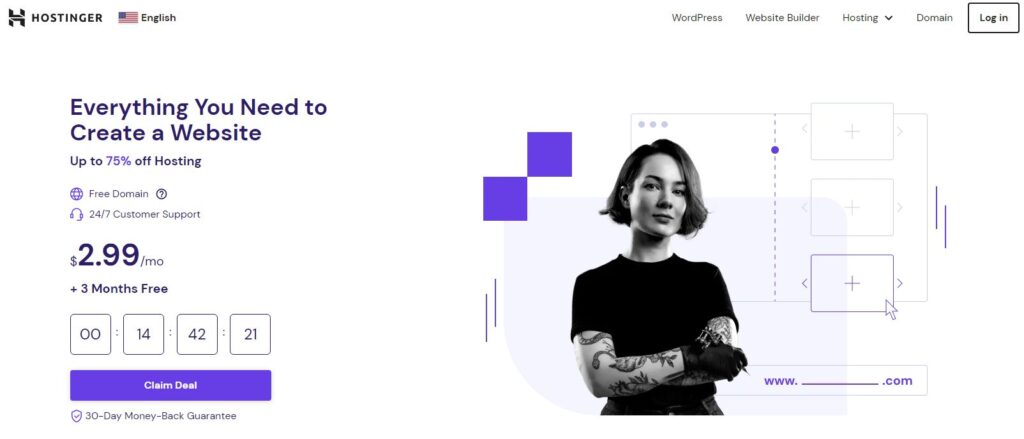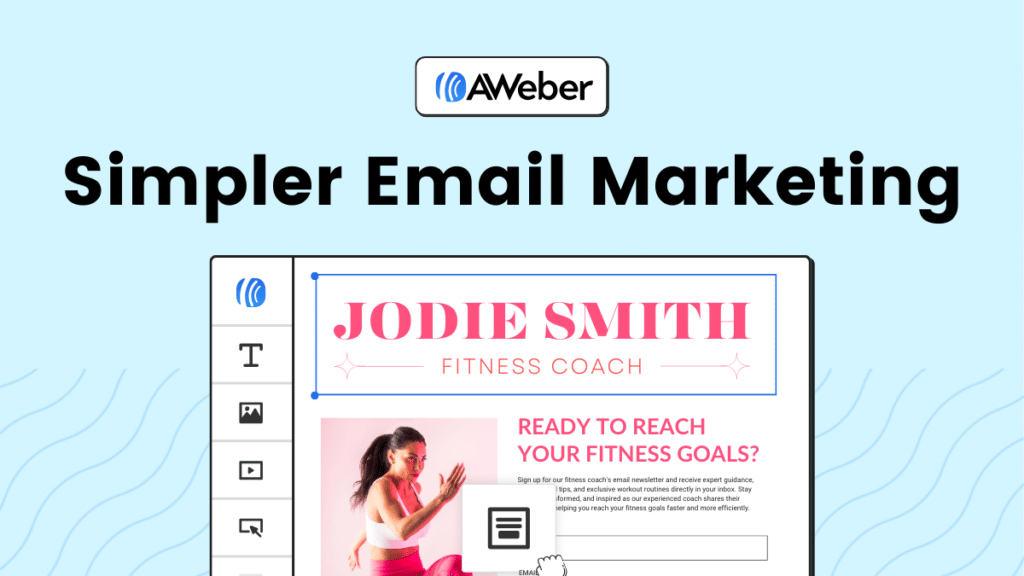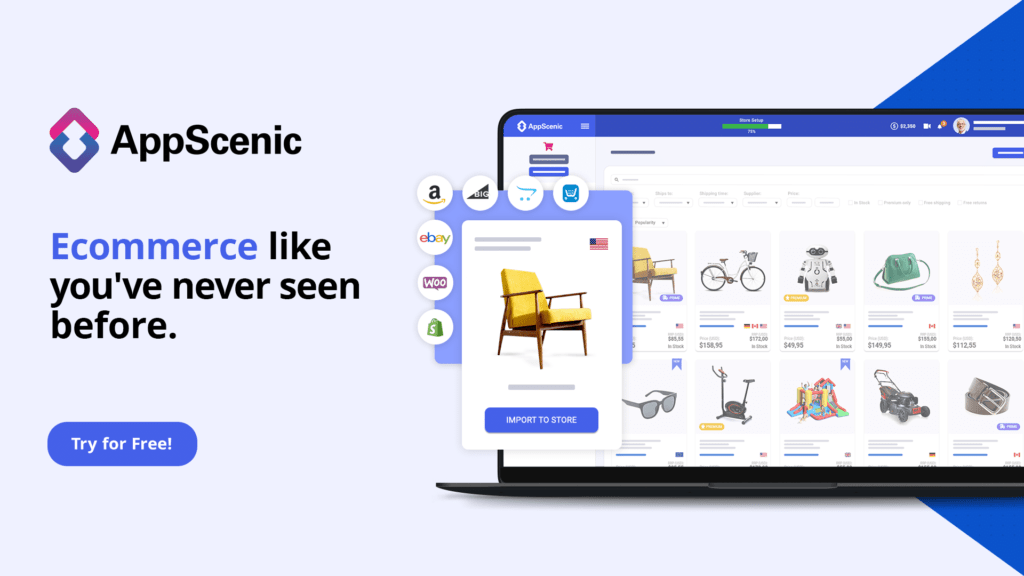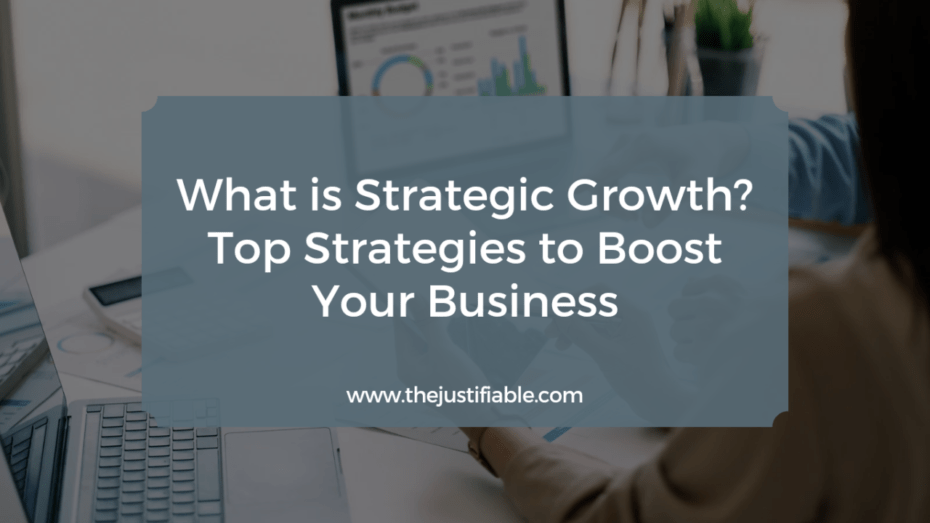Table of Contents
Are you searching for ways to achieve financial freedom? Have you ever considered unlocking the potential of passive income ideas to secure a future where your money works for you, not the other way around? If these questions resonate with you, you’re in the right place. Passive income ideas hold the key to building wealth over time and creating a life of financial independence.
In my experience, the path to financial freedom begins with understanding and implementing strategies that generate income with minimal ongoing effort. From affiliate marketing to freelancing, there are numerous avenues to explore. Most importantly, the journey requires patience, persistence, and a willingness to learn. I strongly believe that anyone can achieve lasting financial freedom with the right mindset and tools.
What to do to start this journey? My recommendation is to first educate yourself on the various passive income streams available. Then, assess which options align with your skills, interests, and financial goals. In my honest opinion, taking the first step involves choosing one or two strategies to focus on initially. As you gain experience and confidence, you can diversify your income sources, further solidifying your financial foundation. Let’s delve into these passive income ideas and discover how you can begin your journey towards lasting financial freedom.
1. Affiliate Marketing: A Gateway to Earning While You Sleep
Did you know that affiliate marketing spending is expected to grow by 10% in the next few years? This statistic underscores the booming potential of affiliate marketing as a lucrative passive income stream. But what makes affiliate marketing such a powerful gateway to financial freedom? And how can you tap into this ever-expanding market? These are the questions we aim to explore, offering insights into how affiliate marketing can work while you sleep, generating income passively.
Affiliate marketing is, in my opinion, one of the most accessible ways to start generating passive income. It involves promoting products or services and earning a commission for each sale or action completed through your referral. This model benefits both the affiliate and the merchant, creating a win-win situation. Most importantly, it allows individuals to earn money without the need for their own products, making it an ideal starting point for many aspiring digital entrepreneurs.
I recommend starting with a solid plan. Identify your niche based on your interests and market demand. Then, select affiliate programs that align with your audience. Effective affiliate marketing is not about promoting everything but focusing on what serves your audience best. My suggestion for beginners is to focus on content creation that adds value, such as reviews or tutorials, which can naturally incorporate affiliate links. Remember, trust is key. Your recommendations should be genuine and aimed at helping your audience solve their problems or fulfill their needs.
The Basics of Affiliate Marketing: Understanding the Model
Have you ever wondered how affiliate marketing works and why it’s such a popular method for generating passive income? What are the key components of the affiliate marketing model, and how do they interact to create revenue? Understanding the basics of affiliate marketing is crucial for anyone looking to dive into this lucrative field. This section will demystify the model, explaining how you can leverage it to start earning income passively.
At its core, affiliate marketing involves three main parties: the merchant (or creator of the product/service), the affiliate (you), and the consumer. My explanation of the model is straightforward: as an affiliate, you promote the merchant’s products to your audience using a unique affiliate link. When someone purchases through your link, you earn a commission. Most importantly, this model is beneficial because it allows you to earn money by promoting products you believe in without having to create a product yourself.
From my perspective, the beauty of affiliate marketing lies in its simplicity and scalability. You can start with a small audience and a few affiliate products and grow from there. The key is to build trust with your audience by recommending products that offer genuine value. In my experience, success in affiliate marketing comes down to choosing the right products, understanding your audience’s needs, and being transparent about your affiliate relationships. It seems that with a solid grasp of these basics, anyone can begin their affiliate marketing journey.
Steps to Start Generating Affiliate Income Today
Interested in starting your affiliate marketing journey but not sure where to begin? What are the essential steps to get your affiliate marketing endeavor off the ground, and how can you ensure you’re on the right path from day one? Here’s how you can start generating affiliate income today with a straightforward, actionable plan.
Firstly, I recommend choosing your niche carefully. Your niche should be something you’re passionate about and has a good affiliate potential. This means there are products or services within the niche that you can promote. Secondly, create a platform – whether it’s a blog, YouTube channel, or social media account – where you can share content related to your niche. This platform will be where you connect with your audience and promote affiliate products.
Next, sign up for affiliate programs that align with your niche. Look for products that you trust and that your audience will find valuable. Once you’re accepted into these programs, it’s time to start creating content that naturally incorporates your affiliate links. Finally, engage with your audience by providing valuable information, answering questions, and building a community around your content. In my view, these steps are the foundation of a successful affiliate marketing strategy that can start generating income almost immediately.
Maximizing Your Earnings: Strategies for Success
Now that you understand the basics of affiliate marketing and how to start, how can you maximize your earnings and turn a decent income into a substantial one? What strategies can propel your affiliate marketing efforts to the next level? Maximizing your affiliate marketing earnings involves a mix of strategic planning, audience engagement, and continuous learning.
Firstly, I strongly believe in the power of content diversification. Don’t just stick to one type of content or platform. Instead, use blogs, videos, emails, and social media to reach a wider audience. Each platform can attract different segments of your audience, increasing the chances of affiliate sales. Secondly, focus on SEO and keyword research to ensure your content is discoverable. Appearing in search results increases your content’s visibility, driving more traffic to your affiliate links.
Lastly, my recommendation is to analyze and optimize your efforts regularly. Use affiliate marketing tools and analytics to track which strategies are working and which aren’t. This data allows you to refine your approach, focusing more on what brings the best results. In my honest opinion, continuous optimization is the key to affiliate marketing success. It seems that by following these strategies, affiliates can significantly increase their earnings, ensuring their affiliate marketing business not only grows but thrives.
2. Blogging: Turn Your Passion into Profit

“Find a way to get paid for doing what you love, and you’ll never work a day in your life.” This adage rings especially true in the world of blogging, where your passion can indeed become a profitable venture. But how can you transform your interests and expertise into a successful blog? What steps should you take to ensure your blog not only captivates but also converts your audience into revenue? In this section, we delve into how blogging can be a significant source of passive income when approached with strategy and creativity.
Starting a blog with the intention of monetization requires a blend of passion, strategy, and patience. I suggest initially focusing on content quality and consistency. Your blog should serve as a resource for your audience, offering valuable insights, solving problems, and engaging readers with compelling narratives. From my perspective, this foundation of trust and value is what eventually leads to profitability. It’s essential to also understand the technical aspects of blogging, such as SEO, to drive traffic to your site. Increased visibility means more potential for earnings through various monetization strategies.
What to do next involves considering monetization options. Whether through affiliate marketing, sponsored content, selling digital products, or offering online courses, diversifying your income streams can significantly boost your blog’s revenue potential. I recommend starting with one monetization strategy that aligns with your content and audience and gradually adding more as your blog grows. Most importantly, stay authentic in your recommendations and offerings, as your integrity is crucial for long-term success.
Crafting a Blog That Pays: Choosing Your Niche Wisely
“Choose a job you love, and you will never have to work a day in your life.” This timeless wisdom from Confucius applies perfectly to blogging. Selecting the right niche is critical in crafting a blog that not only resonates with your passion but also has the potential to generate substantial income. But what makes a niche profitable? How can you ensure the niche you choose aligns with both your interests and market demands? Let’s explore how wisely choosing your niche can set the foundation for a lucrative blogging career.
Choosing your niche should be a thoughtful process that balances your passions with market viability. I believe the key to a successful blog is to write about what you love and find a way to make it appealing to others. Conduct market research to identify niches with a hungry audience but low competition. From my point of view, the ideal niche is one where your expertise can solve a specific problem or fulfill a need for your target audience. This approach not only makes your blog valuable but also increases the likelihood of monetization.
Once you’ve identified potential niches, my suggestion is to drill down further to find your unique angle. Your blog should stand out by offering something different or better than what’s already out there. Consider factors like affiliate marketing opportunities, the potential for digital or physical products, and the ability to scale your content. My recommendation for aspiring bloggers is to create a content plan that addresses the needs and interests of your target audience while also incorporating SEO strategies to boost visibility.
In my experience, a well-chosen niche can be the cornerstone of a profitable blog. It attracts a loyal audience, provides clear direction for content creation, and opens up numerous monetization opportunities. Most importantly, if you’re passionate about your niche, that enthusiasm will shine through your content, making it more engaging and effective. Remember, the journey of blogging is a marathon, not a sprint. Patience, persistence, and continuous learning are your best allies in turning your passion into profit.
Boost Your Blog’s Revenue: SEO Tips and Monetization Tactics
Are you wondering how to increase your blog’s revenue significantly? What SEO strategies can propel your blog to the top of search engine results, and what monetization tactics can you implement to maximize your earnings? In this section, we dive into essential SEO tips and effective monetization strategies that can help boost your blog’s revenue. Understanding these aspects is crucial for bloggers aiming to turn their passion into a profitable venture.
Firstly, I recommend focusing on keyword research to identify the terms your target audience is searching for. Incorporating these keywords naturally into your content, titles, and meta descriptions can significantly improve your blog’s visibility on search engines. Most importantly, ensure your content provides value and answers the questions your audience is asking. This approach not only enhances your SEO but also builds trust with your readers, making them more likely to engage with your monetization efforts.
Speaking personally, diversifying your income streams is a key strategy for boosting blog revenue. From my perspective, combining affiliate marketing, sponsored content, and selling digital products or services can create a robust revenue model for your blog. Each monetization method has its strengths, and when used together, they can provide a steady income flow. For instance, affiliate marketing can generate passive income, while personalized services or courses can attract higher-paying clients.
Lastly, I strongly believe in the power of an email list for increasing blog revenue. An email list allows you to directly communicate with your audience, promoting your content, products, and affiliate offers more effectively. In my honest opinion, consistently providing value to your email subscribers can lead to higher engagement rates and, subsequently, increased revenue. My recommendation is to start building your email list early on and regularly offer exclusive content or deals to your subscribers. This strategy not only boosts your revenue but also solidifies your relationship with your audience.
3 Blogging Tools That Increase Your Income Potential
In the competitive world of blogging, having the right tools at your disposal can make a significant difference in your blog’s income potential. But which tools should you invest in, and how can they help you maximize your earnings? In this section, we’ll explore three essential blogging tools that can aid in content creation, SEO optimization, and audience engagement, thereby increasing your blog’s income potential.
Firstly, a comprehensive SEO tool is indispensable for any blogger looking to boost their income. I suggest tools like SEMrush or Ahrefs, which offer deep insights into keyword research, competitor analysis, and SEO performance tracking. These tools can help you identify opportunities to rank higher in search engine results, driving more traffic to your blog. More traffic typically means more opportunities for monetization through ads, affiliate marketing, and sponsored content.
Another vital tool is a reliable email marketing platform, such as Aweber or Omnisend. From my perspective, email marketing is one of the most effective ways to engage with your audience and promote your content, products, or services directly. These platforms make it easier to manage your email list, segment your subscribers, and automate your email campaigns, ensuring your messages are targeted and timely. My recommendation is to integrate email marketing into your overall strategy to enhance reader engagement and increase revenue opportunities.
Lastly, a social media management tool like Buffer or Hootsuite is crucial for promoting your blog content across various social platforms. These tools allow you to schedule posts in advance, track engagement, and analyze the performance of your content across different channels. In my experience, social media can significantly amplify your blog’s reach, attracting more visitors and potential income sources. By efficiently managing your social media presence, you can increase your blog’s visibility, drive traffic, and, ultimately, boost your income potential.
3. Email Marketing: Unlocking the Potential of Your List

Much like gardening, where the quality of soil directly impacts the growth and yield of plants, the effectiveness of email marketing hinges on the quality and engagement of your email list. In the digital marketing ecosystem, email marketing stands out as a powerful tool, capable of delivering personalized content directly to your audience’s inbox, thereby fostering stronger connections and driving conversions. But how can you unlock the full potential of your email list? And what strategies can ensure your messages not only reach your audience but also resonate and drive action? This section delves into the nuances of email marketing and how to maximize its impact for your business or blog.
To begin with, I believe the foundation of effective email marketing lies in building a list that is both engaged and targeted. This means attracting subscribers who are genuinely interested in what you have to offer. I recommend leveraging your website, blog, and social media platforms to offer valuable resources or incentives (like ebooks, webinars, or discounts) in exchange for email sign-ups. This approach not only helps grow your list organically but also ensures that your subscribers are more likely to engage with your content.
Next, personalization and segmentation are key strategies that I strongly believe can significantly enhance the effectiveness of your email campaigns. By segmenting your list based on demographics, interests, or past behaviors, you can tailor your content to meet the specific needs and preferences of different audience segments. From my experience, emails that feel personalized to the recipient’s interests are more likely to be opened, read, and acted upon. Utilizing email marketing platforms that offer advanced segmentation and automation features can make this process more efficient and impactful.
Lastly, consistent and valuable communication is paramount. My recommendation is to establish a regular email schedule that keeps your audience engaged without overwhelming them. The content of your emails should provide value, whether through informative articles, exclusive deals, or insights into your industry. It’s crucial, in my view, to balance promotional content with valuable, non-sales content to maintain trust and interest.
Building a Profitable Email List from Scratch
Starting an email list from the ground up can feel like facing a steep mountain with no clear path to the summit. However, just as every mountain can be climbed one step at a time, building a profitable email list is achievable through strategic, methodical efforts. But where do you begin? And how can you ensure that your list grows not only in numbers but in value and engagement? This section provides a blueprint for building a profitable email list from scratch, emphasizing the importance of quality over quantity.
First and foremost, I suggest focusing on offering irresistible value as a magnet for your potential subscribers. This could be in the form of a free download, exclusive content, or a promising discount. The key here is to offer something that is closely aligned with your audience’s interests and needs, making the decision to subscribe a no-brainer. Additionally, make sure the process of subscribing is as simple and straightforward as possible. Complex sign-up processes can deter potential subscribers.
Next, leverage every touchpoint with your audience to promote your email list. Whether it’s through your website’s homepage, during checkout for e-commerce, or at the end of your blog posts, every interaction should include a compelling call-to-action encouraging email subscription. From my perspective, it’s also beneficial to utilize social media platforms to reach a wider audience by promoting your email incentives. Engaging with your followers and directing them towards your email list can significantly amplify your list-building efforts.
Finally, consistency in communication and delivering on your promises is crucial. Once you begin to acquire subscribers, it’s important, in my honest opinion, to nurture your relationship with them through regular, valuable email content. This helps in retaining subscribers and gradually converting them into loyal customers or followers. My recommendation is to always prioritize the quality of your list over sheer numbers. A smaller, engaged email list can be far more profitable than a large, disengaged one. By applying these strategies with patience and persistence, you’ll be well on your way to building a profitable email list from scratch.
Email Marketing Strategies for Recurring Revenue
Email marketing, when executed correctly, can become a significant source of recurring revenue for businesses and entrepreneurs alike. But what strategies can transform your email marketing efforts into a consistent revenue stream? And how can you ensure that your subscribers remain engaged and ready to convert over time? In this section, we delve into four key strategies designed to maximize the potential of your email marketing for generating recurring revenue, ensuring your campaigns not only reach your audience but truly resonate with them.
Firstly, I recommend implementing a subscription model or membership program that offers exclusive content or benefits to your subscribers. This approach encourages a steady income flow, as subscribers pay a recurring fee for continued access to valuable resources or services. Most importantly, ensure the content provided is high quality and offers genuine value that justifies the subscription cost. From my perspective, this not only helps in retaining subscribers but also in attracting new ones through word-of-mouth and social proof.
Next, consider segmenting your email list to offer personalized product recommendations based on past purchases or interactions. Personalization enhances the relevance of your emails, making subscribers more likely to engage and make additional purchases. I strongly believe that utilizing data to understand your audience’s preferences and behaviors is key to effectively tailoring your recommendations, thereby increasing the likelihood of repeat purchases and, consequently, recurring revenue.
Lastly, regular promotions and exclusive offers for email subscribers can significantly boost recurring revenue. Exclusive deals create a sense of value and appreciation among your subscribers, encouraging loyalty and repeat business. My suggestion is to plan these promotions around key dates or events relevant to your audience, ensuring they remain timely and enticing. Coupled with a strong call-to-action, these offers can drive conversions and foster a long-term relationship with your subscribers, contributing to a steady stream of recurring revenue.
Enhancing Engagement: Content Ideas That Convert
Engagement is the lifeblood of successful email marketing campaigns. But how can you craft content that not only captures the attention of your subscribers but also encourages them to take action? And what types of content are most effective in driving engagement and conversions? This section explores content ideas that have proven to convert, providing you with inspiration to enhance the engagement of your email marketing efforts and turn subscribers into loyal customers.
To start, I believe in the power of storytelling. Sharing success stories, case studies, or customer testimonials within your emails can create a strong emotional connection with your audience. These narratives help illustrate the real-world value of your products or services, making them more relatable and enticing. Most importantly, they serve as social proof, reassuring subscribers of the effectiveness and reliability of your offerings.
Next, educational content such as tutorials, how-tos, or industry insights can significantly boost engagement. This type of content positions your brand as a thought leader and a valuable resource, encouraging subscribers to keep opening your emails for the insights they offer. My recommendation is to align this educational content with your products or services, subtly guiding subscribers towards making a purchase by highlighting the practical applications and benefits of what you offer.
Finally, interactive content like surveys, polls, or quizzes can greatly enhance engagement by inviting subscribers to participate actively. This interaction not only provides valuable feedback and insights into your audience’s preferences but also fosters a sense of involvement and community. From my experience, emails that incorporate interactive elements tend to have higher engagement rates, as they break the monotony of traditional email content and offer a fun, engaging way for subscribers to connect with your brand. By incorporating these content ideas into your email marketing strategy, you can enhance engagement, improve conversion rates, and build a more dynamic and interactive relationship with your subscribers.
4. Dropshipping: Your Path to E-Commerce Success Without Inventory

While it’s true that starting an e-commerce business typically involves significant upfront investment in inventory, dropshipping presents a compelling exception to this rule. Dropshipping allows entrepreneurs to sell products directly to consumers without ever holding inventory themselves. But how does one navigate this path to e-commerce success? And what are the critical steps and strategies for building a profitable dropshipping business? This section aims to explore the unique advantages of dropshipping and guide you through the essentials for leveraging this model to achieve e-commerce success without the traditional inventory burdens.
Firstly, understanding the dropshipping model is crucial. It operates by partnering with suppliers who fulfill orders on your behalf directly to the customer. This means you can focus on building your brand and marketing your products without worrying about stock management or shipping logistics. I suggest starting by selecting a niche market with high demand and low competition, which can significantly increase your chances of success. From my perspective, the beauty of dropshipping lies in its flexibility and low entry barrier, making it an attractive option for aspiring entrepreneurs.
Next, finding reliable suppliers is a critical step in the dropshipping journey. I recommend conducting thorough research and due diligence to ensure your chosen suppliers are reputable and can offer quality products and reliable shipping times. Establishing a strong relationship with your suppliers can also lead to better pricing and terms, which can enhance your competitive edge. From my experience, platforms like Appscenic and Spocket can be excellent starting points for finding and managing supplier relationships.
Dropshipping 101: The Essentials for Starting Out
Embarking on a dropshipping venture can seem daunting at first, with various aspects to consider from choosing products to finding suppliers. However, breaking down the process into manageable steps can demystify the journey and set the foundation for a successful e-commerce business. So, what are the essential steps for starting out in dropshipping, and how can you ensure you’re setting up your business for success? This section aims to provide a beginner-friendly guide to the fundamentals of launching a dropshipping business.
The first step in starting a dropshipping business is market research and niche selection. I cannot stress enough the importance of selecting a niche that is not only of personal interest but also has a strong demand and low competition. This can involve analyzing market trends, understanding customer pain points, and identifying gaps in the market. From my point of view, choosing a niche you’re passionate about can also keep you motivated during challenging times and can make marketing your products more authentic and effective.
Once you’ve identified your niche, setting up your online store is the next critical step. I recommend using platforms like Bigcommerce or WooCommerce, which offer user-friendly interfaces and dropshipping integrations. Customizing your store’s design to reflect your brand and making navigation easy and intuitive for visitors are key factors in converting traffic into sales. Additionally, creating high-quality product descriptions and images can significantly enhance product appeal and customer trust.
Lastly, developing a comprehensive marketing strategy is essential for attracting customers to your store. Utilizing SEO techniques to improve your store’s visibility, engaging with your audience on social media, and leveraging email marketing to build relationships with customers are all effective tactics. From my experience, consistently analyzing and adjusting your marketing strategy based on performance data can lead to continuous improvement and growth. In conclusion, while dropshipping offers a path to e-commerce success with minimal upfront investment, it requires dedication, research, and strategic planning to navigate successfully.
Tips for Finding Winning Products That Sell Themselves
Identifying products that virtually sell themselves is a cornerstone of dropshipping success. But how do you sift through countless items to find those gems? What criteria should you use to predict their selling potential? This section is dedicated to offering five practical tips to help you discover winning products for your dropshipping business, ensuring that your selection resonates with your target audience and stands out in the competitive e-commerce landscape.
Firstly, leverage product research tools like Google Trends, Dropified, or Jungle Scout to identify trending products and consumer interests. These tools provide valuable insights into what people are searching for and buying, helping you to spot potential winners early on. I recommend focusing on products with a rising interest over time, indicating a growing market demand that you can capitalize on. Additionally, analyzing customer reviews and feedback can offer clues about the product’s popularity and quality.
Next, consider the product’s problem-solving potential or its ability to fulfill a specific need. Products that address specific pain points or enhance the customer’s lifestyle in a meaningful way tend to have a higher perceived value, making them more appealing. From my perspective, this approach not only aids in product selection but also simplifies your marketing efforts, as you can highlight how the product solves a problem or improves the customer’s life.
Lastly, keep an eye on social media platforms and influencer trends for product inspiration. Social media can be a goldmine for discovering products that are gaining traction among consumers. Pay attention to items that influencers are promoting and the reactions from their followers. My suggestion is to also explore niche forums and communities related to your market to gather insights into consumer preferences and unmet needs. Combining these strategies can significantly increase your chances of finding products that not only sell well but also strengthen your brand’s position in the market.
Scaling Your Dropshipping Business: Advanced Techniques
Scaling a dropshipping business goes beyond just finding winning products; it involves optimizing your operations, expanding your market reach, and enhancing your customer experience. But what advanced techniques can propel your dropshipping business to new heights? And how can you implement these strategies effectively to ensure sustainable growth? In this section, we’ll explore advanced techniques for scaling your dropshipping business, focusing on strategic expansion and operational efficiency.
Implementing automation tools is a critical step for scaling efficiently. Automating aspects of your business, such as order processing, inventory management, and customer service, can save you time and reduce the risk of errors. I strongly believe that investing in automation software can help you manage increased order volumes without compromising the quality of your customer service. Additionally, it allows you to focus on strategic tasks that drive growth, such as marketing and product development.
Expanding your product range strategically is another essential technique for scaling. While it’s important to start with a focused niche, diversifying your product offerings can help you tap into new markets and customer segments. I recommend conducting thorough market research to identify complementary products that align with your brand and have a proven demand. However, it’s crucial to maintain a balance and ensure that your product expansion does not dilute your brand identity or overwhelm your operations.
Lastly, exploring new marketing channels and international markets can significantly boost your business’s growth potential. Expanding your reach through platforms like Facebook Ads, Google Ads, and Instagram can attract a broader audience. Additionally, considering international expansion can open up your business to a global customer base. My suggestion is to start with markets that have low entry barriers and a high demand for your products. From my experience, careful planning and localization efforts are key to succeeding in new markets. By implementing these advanced techniques, you can scale your dropshipping business effectively, ensuring long-term success and profitability.
5. Freelancing: Leverage Your Skills for Flexible Income
It might come as a surprise to learn that freelancing has become one of the fastest-growing job markets in the world, with an increasing number of professionals choosing the flexibility of freelancing over traditional employment. But what makes freelancing such a compelling choice for so many? And how can you leverage your skills to tap into this flexible income source? In this section, we explore the transformative potential of freelancing as a career path and provide insights into how you can effectively harness your abilities to build a successful freelance career.
The first step in leveraging your skills for freelancing is to conduct a thorough self-assessment. Identify your strengths, passions, and the skills that you excel at. I suggest looking at market trends to see which of your skills are in high demand. This understanding allows you to position yourself in niches where your expertise can command higher rates and attract steady work. Most importantly, consider acquiring new skills or sharpening existing ones to stay competitive in the evolving freelance marketplace.
Building a strong personal brand and online presence is also crucial. In my experience, clients are drawn to freelancers who not only showcase their expertise but also convey reliability and professionalism. Creating a comprehensive portfolio, maintaining an active LinkedIn profile, and engaging with relevant communities can significantly enhance your visibility. I recommend focusing on platforms where your target clients are most active. This approach not only increases your chances of being discovered but also helps in building a network that can lead to referrals and repeat business.
Identifying High-Demand Freelancing Opportunities in 2024
As we move further into the digital age, the landscape of freelancing continues to evolve, with new opportunities emerging in various fields. But what are the high-demand freelancing opportunities in 2024, and how can you position yourself to take advantage of these trends? Understanding the current market demands and forecasting future trends are crucial steps in identifying lucrative freelancing opportunities.
Technology-related skills, particularly in software development, web design, and cybersecurity, continue to be in high demand. As businesses increasingly rely on digital platforms, the need for professionals who can create, manage, and secure these platforms grows. I recommend for those with tech skills to continuously update their knowledge in these areas, as technological advancements are rapid. For individuals interested in technology but lacking the necessary skills, now is the time to invest in learning. Many online courses and certifications can help you get started.
Another area experiencing significant growth is content creation, including writing, graphic design, and video production. With the ongoing expansion of content marketing and social media, businesses are constantly in need of creative professionals who can produce engaging content. From my perspective, specializing in niche content areas or mastering specific content creation tools can set you apart in this competitive field. Additionally, the rise of remote work has increased the demand for virtual assistants, project managers, and consultants across various industries.
Lastly, sustainability and green technologies are emerging fields that are starting to require freelance expertise. Companies are seeking professionals who can contribute to their sustainability goals, whether through environmental consulting, sustainable design, or green marketing strategies. In my view, freelancers who can align their offerings with the global shift towards sustainability will find themselves in a favorable position. Staying informed about industry trends and continuously adapting your skills are key strategies for tapping into high-demand freelancing opportunities in 2024 and beyond.
Building a Strong Freelance Profile: Stand Out in the Crowd
In the bustling marketplace of freelancing, creating a profile that captures attention and showcases your unique skills is more crucial than ever. But what elements make a freelance profile truly stand out? And how can you differentiate yourself in a sea of competitors? Crafting a compelling freelance profile is not just about listing your skills; it’s about telling a story that resonates with potential clients. This section will guide you through the essential steps to build a strong freelance profile that not only highlights your expertise but also communicates your unique value proposition.
Firstly, I recommend focusing on a clear, professional profile picture and a compelling bio that succinctly communicates who you are, what you do, and how you can solve your clients’ problems. This initial impression can significantly impact a client’s decision to explore your profile further. Highlight your most notable achievements, relevant experience, and any specialized skills or certifications. Most importantly, tailor your profile to appeal to your ideal client, emphasizing the benefits they will gain from working with you.
Next, portfolio pieces are critical in showcasing the quality and breadth of your work. Select samples that best represent your skills and range of experiences. I suggest including a brief description for each portfolio item, detailing your role, the project’s objectives, and the results achieved. This approach helps potential clients understand your working style and the tangible value you bring to projects. From my perspective, a well-curated portfolio can significantly boost your credibility and attract higher-quality clients.
Lastly, client testimonials and reviews can greatly enhance your profile’s attractiveness. Positive feedback from past clients serves as social proof, reinforcing your expertise and reliability. I strongly believe in actively seeking feedback from clients after project completion and asking their permission to feature their testimonials on your profile.
In my honest opinion, genuine, positive reviews can be incredibly persuasive, providing potential clients with the confidence they need to choose you over others. By implementing these strategies, you can create a standout freelance profile that not only showcases your skills but also clearly communicates the unique value you offer to clients.
Effective Rate Negotiation: Ensuring Fair Pay for Your Work
Navigating the waters of rate negotiation can often be daunting for freelancers, yet securing fair pay for your work is fundamental to your freelance career’s sustainability and growth. But how can you approach rate negotiations confidently and effectively? And what strategies can help you ensure that you’re compensated fairly for the value you provide? This section aims to demystify the process of rate negotiation, offering practical tips to help you advocate for yourself and achieve rates that reflect your skills and expertise.
To begin with, thorough research is crucial. I suggest investigating standard rates within your industry and skill level to establish a benchmark for your negotiations. This preparation not only arms you with valuable data but also bolsters your confidence in discussions with clients. Most importantly, understand your worth and the unique value you bring to the table. Articulating this value compellingly can significantly influence the negotiation outcome in your favor.
Next, transparency and clear communication are key. When discussing rates with potential clients, be open about your pricing structure and the rationale behind it. I recommend providing a detailed breakdown of what the client can expect in terms of deliverables and the value they bring to their business. This clarity helps manage expectations and builds trust. Additionally, be prepared to negotiate by identifying areas where you’re willing to be flexible and those where you’re not. From my perspective, having a clear negotiation strategy allows you to navigate these discussions more effectively.
Lastly, don’t underestimate the power of negotiation practice. Role-playing negotiation scenarios with a mentor or colleague can improve your communication skills and negotiation tactics. I believe that being prepared for common objections and having ready responses can make a significant difference. Remember, negotiation is a two-way street; it’s about finding a mutually beneficial agreement, not just driving a hard bargain. In my experience, freelancers who approach negotiations with professionalism, confidence, and a willingness to find common ground are more likely to secure fair rates and build lasting client relationships.
Conclusion: Taking the First Step Towards Financial Freedom
Embarking on the journey towards financial freedom can seem like a daunting task at first glance. However, understanding the power of passive income and taking that first step can significantly change the trajectory of your financial future. But what does it truly mean to begin this journey, and how can one navigate the myriad of options available? This conclusion aims to consolidate the insights shared throughout this guide, emphasizing the importance of taking action, diversifying income streams, and committing to continuous learning for lasting financial success.
The first step towards financial freedom involves a shift in mindset. Recognizing that your time and effort can be leveraged to generate income even when you’re not actively working is pivotal. I suggest starting small with one or two passive income ideas that resonate with you and for which you can consistently dedicate time and resources. Most importantly, remember that every journey begins with a single step. Taking action, no matter how small, sets the momentum for future growth and opportunities.
Diversifying your income streams is another crucial strategy. Relying on a single source of income is risky in today’s volatile economic landscape. By exploring different passive income ideas, such as affiliate marketing, blogging, and investing, you can create a safety net that provides financial stability and peace of mind. From my perspective, diversification not only mitigates risks but also opens up more opportunities for wealth accumulation. It’s about finding the right balance between various income streams that align with your interests, skills, and financial goals.
Lastly, committing to continuous learning and growth is essential for sustaining and expanding your passive income. The landscape of passive income opportunities is constantly evolving, with new strategies and platforms emerging. Staying informed and adaptable is key to navigating these changes successfully. I strongly believe in the value of education, whether through formal courses, self-study, or learning from peers and mentors. In my experience, the most successful individuals in the realm of passive income are those who view learning as a lifelong journey.
Frequently Asked Questions (FAQ)
What is passive income, and how does it differ from active income?
Passive income is money earned with minimal ongoing effort, like earnings from investments or royalties, whereas active income requires continuous work, such as a regular job.
What are the most effective passive income ideas for beginners?
For beginners, affiliate marketing, blogging, and email marketing are effective because they require low upfront investment and can be scaled over time.
How much money can I realistically make with passive income?
Earnings vary widely depending on the income stream and effort. For example, successful bloggers or affiliate marketers can earn thousands monthly, but it may take time to reach that level.
What are the best platforms to start affiliate marketing?
Some of the best platforms include MyLead, ShareASale, and FlexOffers for their broad range of programs and competitive commissions.
How do I choose a niche for my blog to generate passive income?
Select a niche that you’re passionate about, has low competition, and where you can provide value, ensuring it aligns with market demand for monetization opportunities.
Is dropshipping a viable passive income stream?
Yes, dropshipping is viable because it allows you to sell products without holding inventory. Success depends on choosing the right niche and reliable suppliers.
How can I grow an email list for passive income through email marketing?
Grow your list by offering valuable incentives, using social media, and ensuring a simple sign-up process. Consistent, valuable communication is key to retaining subscribers.
What tools are essential for maximizing blog revenue?
How long does it take to start earning passive income from blogging?
It typically takes several months to a year of consistent effort in content creation and SEO before seeing substantial earnings from a blog.
Can freelancing be considered a passive income source?
Freelancing isn’t typically passive as it requires ongoing work, but some aspects, like creating and selling digital products, can generate passive income over time.









